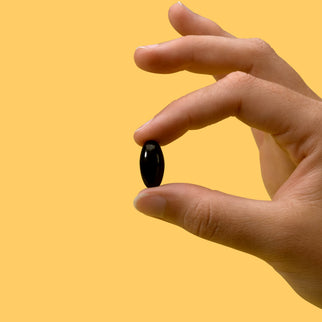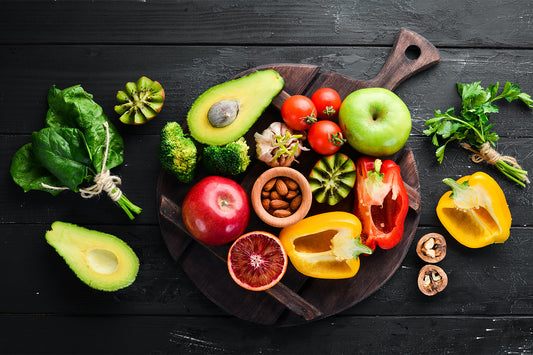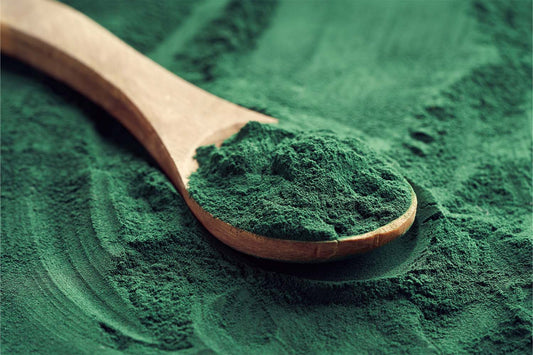Many people worry that if you eat only plants, you will not be able to get enough protein, but that is a bit of a common myth. Although it may be a bit harder to get your recommended protein intake from plants than from animal products, there are still plenty of great plant-based sources of protein.
On a plant-based diet, you may need to be slightly more mindful about how you receive your protein, but you can easily obtain your necessary daily amount with the right diet. In this guide, iwi life will provide some insight into plant-based proteins and help you understand your options for obtaining protein from plant-based sources.
Why Is Protein Important?
Proteins are some of the most necessary macronutrients for our bodies. Every cell in our bodies contains protein. Getting protein in your diet is crucial for helping the body both repair cells and make new ones. We need protein for building muscle, growth and development during childhood, and repairing tissue.
Proteins are chains of smaller building blocks called amino acids, and this is where plant sources of protein have sometimes come under scrutiny: not every plant source contains all of the essential amino acids. What is more important than where you get your protein is the fact that you get enough of it, and the right mix of amino acids.
How Does Plant Protein Differ From Animal Protein?

Plant protein refers to any significant plant-based food source of protein. Obtaining your protein from plants comes with several indirect health benefits. Plants high in protein are also high in other vital nutrients, like calcium, iron, healthy fats, and vitamins.
Additionally, many animal products are high in cholesterol and saturated fats, which come with health risks like an increased risk for chronic diseases such as obesity, type 2 diabetes, and heart disease.
Most animal-based sources of protein are complete proteins, while many plant proteins are often considered incomplete proteins. Despite the amount of protein in animal products, you do not need to eat animal products to get all of the protein you need in a diet.
What Is a Complete Protein?
There are 20 amino acids that combine to form a protein. Out of these 20,11 are produced by the body, while the others are not. The remaining nine are called essential amino acids as your body is unable to synthesize these amino acids on its own and must obtain them through food.
A complete protein is a source of protein that contains all nine of these essential amino acids. It is important to obtain a healthy balance of essential amino acids in your diet, and consuming foods that are complete proteins makes it easier to do just that.
Protein content does not always tell you the full story, as protein quality also makes a difference. For example, a food product label may say that a serving of the food is 20g of protein, but that does not mean that your body will absorb and use all of the protein. A big factor in your body’s ability to obtain the amount of protein that you need is whether you are consuming complete proteins.
When you include a variety of plant-based foods in your diet, you can easily obtain all nine of the essential amino acids throughout your day. If you are concerned about maintaining a diverse diet and obtaining these necessary amino acids, several plant-based foods act as complete proteins.
How Much Protein Do You Need?
With the number of available protein bars, protein shakes, and other protein supplements, there is a lot of emphasis on ensuring we receive enough protein — but how much do we really need? Experts recommend that you obtain between 10 to 35% of your calories from protein. The recommended dietary allowance for protein is about 0.8 grams per kilogram of body weight or about .37 grams per pound. For example, someone weighing 160 pounds may need about 60 grams of protein daily.
However, the amount of protein you need can change depending on your lifestyle and other health factors. As you age or exercise more frequently, you may need up to 1.5g of protein per kilogram of body weight. Therefore, it is best to consult a nutritionist to get a more accurate recommendation of how much protein you should consume.
What Are Good Sources of Plant-Based Protein?

Including the right sources of plant-based proteins in your diet makes it easy for you to obtain the complete protein you need. The following are some of the best plant protein sources.
Nuts
Peanuts, pistachios, and almonds all boast more than 6 grams of protein in a 1/4 cup serving — that's about as much would fit into the palm of your hand.
With antioxidants and healthy fat content to boot, nuts are a convenient and portable way to make sure you're getting your plant-based protein needs met during the day.
Legumes
Legumes are a common part of many plant-based diets because of their protein, fiber, and iron content, among the many other benefits. Examples of legumes include chickpeas, black beans, pinto beans, and lentils. These examples are a great way to obtain your recommended protein intake. As a demonstration, 100g of lentils gives you 9g of protein. Include more legumes in your diet by adding them to burritos, soups, or chili.
Soybeans
Soy is one of the richest plant-based protein sources. It is also extremely versatile and can be eaten in various forms, including tofu, edamame, and tempeh. By eating soy products, you can obtain a high amount of protein as well as a healthy intake of calcium and iron.
There are plenty of ways to eat more soy. Tofu can take on a variety of flavors and can go in soups or be fried on its own, edamame can be marinated or seasoned and eaten as a snack, and tempeh can be added as a protein option to many entrees.
Seeds
Various types of seeds are great sources of protein, including chia seeds, sunflower seeds, hemp seeds, and flax seeds. Just a quarter cup of chia or flax seeds provides about 8 grams of protein, demonstrating how protein-dense seeds can be. Examples like hemp and chia seeds are especially beneficial as they are complete proteins.
Many seeds are also high in fiber and the omega-3 fatty acid precursor ALA — but you’ll still need to look elsewhere for the crucial omega-3s DHA and EPA. You can include more seeds in your foods by adding them to your oatmeal, smoothies, or even baking recipes.
Meat Substitutes
Meat substitutes have become increasingly popular amongst vegans and omnivores alike. These substitutes maintain a similar texture and taste to meat without the health drawbacks of meat. Today you can find substitutes for chicken tenders, hamburger patties, and even lunch meat at a large portion of large grocery stores.
Although they are not made from meat, many of these substitutes still maintain a high protein content, around 20 grams per serving.
Seitan
Often referred to as “wheat meat,” seitan is a remarkable source of protein, providing 25g of protein per 100g, placing it among some of the best sources of protein, either plant or animal-based. Seitan is made from vital wheat gluten and has a very similar texture to meat.
Seitan is versatile depending on how it’s made and can be used in anything from stir-fries to sandwiches. Cooking your seitan along with edamame gives you a complete protein.
Because seitan comes from vital wheat gluten, those with gluten intolerance or on a gluten-free diet should turn toward alternative options.
Protein Powder
Protein powder is often made from whey or other animal products, because animal products maintain a high protein density. However, more recently, there have been a growing number of options for plant-based protein powders. Many of these powders use soy or pea protein, a particularly dense protein.
Protein powders are often rich in other vitamins and minerals, like calcium, iron, magnesium, and more. Although protein powders can be a great way to supplement more protein in your diet, you should be careful to avoid protein powders high in sugar, which can diminish their benefits.
Algae

The last option on this list is maybe the most unique, as it is not currently a key part of a standard diet, but has the potential to be in the future. Microalgae are at least 40% protein, making it a rather dense source. In fact, it is so protein-dense that on the same land, algae can produce about seven times as much protein as soybeans.
Algae may be a future food source, able to meet the nutritional needs of a growing global population, especially because it is extremely sustainable to produce. For example, iwi life makes algae-based omega-3 supplements using just sunlight, CO2, and brackish, salty water with some added nutrients, on otherwise unused land.
Although algae food options are not yet common in the United States, the fact that some strains of algae are complete protein sources high in valuable branch chain amino acids means this crop could be the future of plant-based nutrition. Microalgae contains all of the essential amino acids at the right proportions, as well as the highest concentration of branched chain amino acids in the plant world — which are good for muscle growth and recovery. Keep your eye on algae!
Quinoa
Although it is a type of whole grain, quinoa belongs in its own category to fully highlight its extensive benefits. In 100g of quinoa, you receive 4.4g of protein, which is even more impressive when you learn that quinoa is a complete protein.
This grain offers several other valuable nutrients, including iron, calcium, potassium, and fiber. Since it is high in carbohydrates and protein, quinoa makes a great substitute for rice and pasta in many dishes.
Vegetables
You can't forget your veggies when it comes to getting plant proteins. Several types of vegetables, like green leafy vegetables, are particularly great sources of protein. For example, just 100g of spinach or kale contains about 3g of protein.
Eating high-protein vegetables also gives you the ability to receive a long list of important vitamins, like vitamins A, C, E, and K. You can incorporate more green vegetables into your diet by eating more salads, adding them to rice or stir-fried dishes, or simply eating them as a side cooked with some olive oil, salt, and pepper.
Embrace the Power of Plants
Ultimately, plenty of plant proteins are available that allow you to steer away from animal-based proteins altogether if you so choose. At iwi life, we know all about the power of plants, as we trust the power of algae to provide valuable nutrition. We are confident that algae is the future, providing an extraordinary amount of nutrients, including omega-3 fatty acids.
See the potential of algae for yourself and try iwi life’s algae-based omega-3 supplement. This rich source of both DHA and EPA omega-3s provides extensive support to various systems throughout your body, including your brain, heart, eyes, bones, and more. To see all of the benefits that algae-based supplements can provide, explore our complete family of products.
Sources:
Are you getting too much protein? | Mayo Clinic Health System
Protein in diet | MedlinePlus Medical Encyclopedia
Algal Proteins: Extraction, Application, and Challenges Concerning Production | PubMed Central
Do I Need to Worry About Eating ‘Complete’ Proteins? | Cleveland Clinic
Spinach, raw nutrition facts and analysis. | Nutrition Value
Lentils, without salt, boiled, cooked, mature seeds nutrition facts and analysis. | Nutrition Value
16 Nuts and Seeds High in Protein | Food Data
Are Meat Substitutes Healthy? | Cleveland Clinic





















